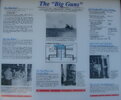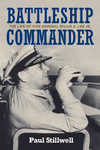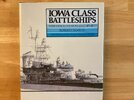Caliber is trick question when it comes to naval rifles
And, it's a bit of a left-over from when projectile range far outpaced visual targeting range. So, a designer might want less-long rifles (this saves weight directly, and in length of the ship) rather than longer. Now, the stumpier rifles needed more elevation than their longer cousins, which often means a bigger "hole" in the front of the armored turret to permit such elevation. While the bigger hole saved weight, it also represented "more weakness" to return fires.
So, the 14"/45s on
USS Texas (and her sister
New York) only elevated to 22°--which was more than sufficient for the visual range-finding and pointing used on those ships. When the Iowa Class was laid down, their 16"/50 Mk7 rifles could elevate to 45°. The 1900# armor-piercing rounds had an m/v for 2500 fps, and took a minute and a half to reach out to 24 miles (39km).
The terminology of "naval rifles" came about to distinguish them from the various smoothbore weapons then at sea. There was a time where rifled muzzle loaders were a thing, with the Brits & Italians dallying with 50 & 100 ton RML in their mutual Mediterranean arms race in the 1870s. To say that these weapons had a complicated loading sequence, ashore or at sea, is a bit of an understatement. (Armstrong built 100 ton RML for the Italian Navy, and also for the Royal Navy garrison ashore at Malta, where the last of the rifles still exists today.)
By custom, the bore diameter wants to be 2" or greater and the barrel 20 or more calibers long, to be called "rifle." Otherwise they are just "gun." So, the 1.5" QF (Quick Firing) tertiary weapons on, say,
USS Olympia, are "QF guns" (if also called, confusingly, "one pounders" as well).







